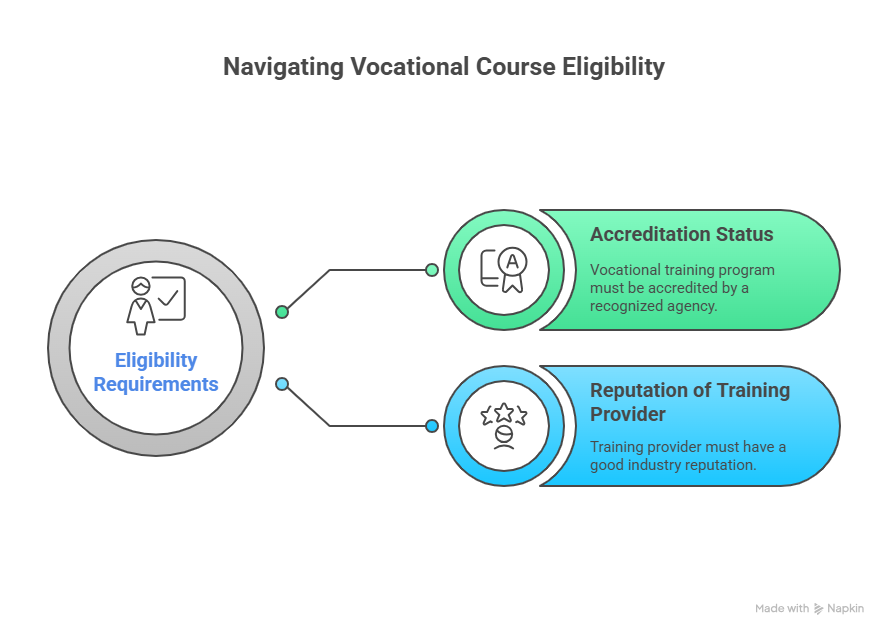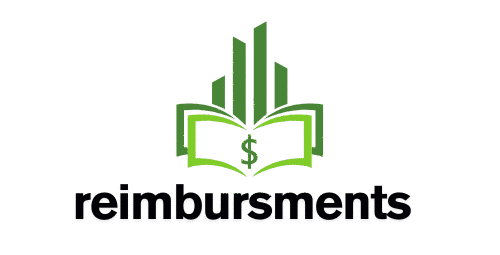Did you know that in today’s competitive job market, millions of Americans are reskilling and upskilling through vocational training? Financial aid initiatives, such as funding for vocational training, are more important than ever due to the growing expenses of education.
Gaining the financial assistance you require may depend on your ability to comprehend the requirements for vocational course reimbursement. This post will walk you through the steps, giving you a concise rundown of what you must do to be eligible and how to apply for the funding that will enable you to fulfill your professional ambitions.
Understanding Vocational Course Reimbursement Programs in the US
For those who want to progress in their careers, it is essential to comprehend the complexities of vocational course reimbursement. Programs for vocational training reimbursement are intended to help people learn new skills, which will improve their employability and career opportunities.
The scope and eligibility requirements of these programs vary greatly, so it is crucial for prospective beneficiaries to comprehend the particulars of each program. In order to prevent financial limitations from impeding career advancement, the main objective is to offer financial aid to individuals pursuing vocational training.
Types of Vocational Training Eligible for Reimbursement
These programs offer reimbursement for a variety of vocational training. Among the most prevalent are:
- technical and vocational instruction in domains such as skilled trades, technology, and healthcare.
- certification courses that improve particular abilities, like IT, auto repair, and cooking.
- apprenticeships that integrate relevant classroom education with on-the-job training.
These training courses must be provided by accredited organizations and result in certification or a credential that is in high demand in the labor market in order to qualify for reimbursement.
Common Sources of Vocational Education Funding
Funding for vocational education can come from a number of sources, including:
- Federal and state government initiatives aimed at promoting workforce development.
- employer-sponsored training initiatives, in which businesses fund the skill development of their staff members.
- nonprofits with an emphasis on workforce development and education.
To obtain reimbursement for vocational training, it is essential to comprehend these sources and the requirements for eligibility. It’s also crucial to remember that some programs might have prerequisites that applicants must fulfill in order to be eligible, like financial need or employment status.
Vocational Course Reimbursement Eligibility: Key Requirements
Eligibility for reimbursement of vocational courses depends on a number of important factors, such as work status and educational background. For those looking for financial aid for vocational training, it is crucial to comprehend these requirements.
Educational Prerequisites
The majority of vocational course reimbursement programs have educational requirements for applicants. Depending on the program, this could be anything from a high school diploma to a particular degree or certification. Some programs, for example, might demand that applicants have finished a specific amount of coursework in a related field.
Key educational prerequisites include:
- A high school degree or its equivalent
- Relevant education or credentials
- Prior education or work experience
Employment Status Considerations
Another important consideration when assessing eligibility for reimbursement for vocational courses is employment status. While some programs may be targeted at people who are unemployed or underemployed, others are made for people who are currently employed.
Considerations for employment status could include:
- Presently working in a related field
- Status of underemployment or unemployment
- dedication to looking for work following the completion of the vocational training
Financial Qualifications
Many vocational course reimbursement programs take financial need into account. To be eligible for aid, applicants might have to provide proof of their financial circumstances.
Financial qualifications may involve:
- Assessments of income levels
- Evaluations of financial need
- Capacity to cover the cost of the vocational training on their own
Program-Specific Criteria
The eligibility requirements for each vocational course reimbursement program are distinct. These may include particular requirements pertaining to the vocational training program itself, like the training provider’s reputation or accreditation status.
Program-specific requirements could consist of:
| Criteria | Description |
|---|---|
| Accreditation Status | The vocational training program must be accredited by a recognized accrediting agency. |
| Reputation of Training Provider | The training provider must have a good reputation and be recognized within the industry. |

How to Apply for Vocational Training Reimbursement
If you have the correct information, applying for reimbursement for vocational training can be a simple process. To begin, review the requirements for vocational course tuition reimbursement to see if you qualify for reimbursement of vocational education fees.
Collect the necessary paperwork, such as tuition receipts, certificates of course completion, and proof of enrollment. Make sure you comprehend the particular requirements for your vocational training program as well as the application deadlines.
Send in your application along with the required paperwork, and then get in touch with the appropriate authorities to find out if it was received and how it was being processed. You can accomplish your academic and professional objectives and submit an application for vocational training reimbursement by following these steps.
FAQ
What are the eligibility criteria for vocational course reimbursement?
In order to be eligible, you usually have to fulfill program-specific requirements, as well as requirements related to your financial situation, work status, and educational background.
What types of vocational training are eligible for reimbursement?
As long as they are provided by authorized institutions and fulfill certain program requirements, a variety of vocational training programs are eligible, including those in technology, healthcare, skilled trades, and more.
How do I apply for vocational course reimbursement?
You must apply, typically online, and provide the necessary paperwork, including transcripts, proof of enrollment, and tuition and fee receipts.
What are the common sources of vocational education funding?
Government initiatives like the Workforce Innovation and Opportunity Act (WIOA), employer-sponsored tuition reimbursement plans, and non-profit and professional association scholarships are examples of common sources.
Can I receive vocational course reimbursement if I’m not employed?
Program-specific eligibility varies, but some vocational course reimbursement programs—such as those provided by specific government agencies or nonprofit organizations—are accessible to people without jobs at the moment.
How long does it take to process a vocational course reimbursement application?
Although processing times can vary based on the application’s complexity and the program, you can usually anticipate receiving a decision in a matter of weeks to months.
Are there any additional qualifications required for vocational training reimbursement?
ndeed, some programs might have extra requirements, like a minimum GPA, finishing a certain course of study, or having a certain field of certification.
Can I use vocational course reimbursement for online courses?
Online courses are covered by many vocational course reimbursement programs, but it’s important to verify eligibility by looking at the program’s specific requirements.




